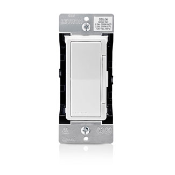210.70(A)(2)(4) and 210.70(C) Lighting Outlets Required
Change Summary
- In dwelling units if a dimmer is used in stairways it must provide full range dimming at all locations.
- Lighting outlet requirements for storage or equipment spaces added for non-dwelling unit utility rooms and basements.
| NEC® Text |
|---|
|
210.70 Lighting Outlets Required. Exception to (A)(2)(1), (A)(2)(2), and (A)(2)(3): In hallways, in stairways, and at outdoor entrances, remote, central, or automatic control of lighting shall be permitted. (4) Lighting outlets controlled in accordance with 210.70(A)(2)(3) shall not be controlled by use of dimmer switches unless they provide the full range of dimming control at each location. (B) Guest Rooms or Guest Suites. (Text unchanged from 2014 NEC – see NEC for full text) (C) Copyright© 2016 National Fire Protection Association |
Expert Analysis
There were two significant changes to 210.70 for the 2017 NEC. The first change relates to the use of dimmers controlling lighting outlets in dwelling unit interior stairways. Article 210.70(A)(2)(3) requires a switch at each floor level and landing level that includes an entryway. The switch requirement on the landing level is only required if the stairway between floor levels has six or more risers. The switches at these locations can be in the form of a dimmer, but the dimmer(s) at all of the control points must control the full range of dimming. Thus NEC is prohibiting the use of basic 3-way dimming where if one of the dimmers is set at a low light level and someone turns on the light at the other dimmer location, the light will only come-on at the low light level and the person can’t increase the brightness. This could create an unsafe condition in stairwells. To avoid this the NEC is calling for more advanced multi location dimmers that can control the light levels at all dimmer locations.
The second change to article 210.70 relates to 210.70(C). The title of 210.70(C) was changed from “Other Than Dwelling Units” to “All Occupancies” and the text at this provision was revised to mirror the Code text at 210.70(A)(3) for dwelling units. This lighting outlet requirement for storage or equipment spaces now applies to dwelling units as well as non-dwelling unit attics, underfloor spaces, utility rooms, and basements. The same types of hazards that can exist due to the lack of illumination exist in all attics, underfloor spaces, utility rooms, and basements whether these areas are located in a dwelling unit or other than a dwelling unit. The revised wording at 210.70(C) for all occupancies is the same as the text found in 210.70(A)(3) for dwelling units.
In the revised text in the First Draft of 2017 NEC, 210.70(C) contained language calling for a lighting outlet installed in a crawl space to be protected from physical damage or be provided with GFCI protection. This requirement for GFCI protection was more appropriate for the GFCI requirements found at 210.8 and was moved to new 210.8(E). This location at 210.70 is for required lighting outlets and, therefore, addresses the luminaire itself or GFCI protection. The option of protection from physical damage was removed from 210.8(E) since physical protection does not provide the appropriate shock protection.
To comply with 210.70(A)(2)(4) Leviton offers many options in digital multi location dimmers. Among them the Bluetooth Decora® Digital Dimmer with matching dimmer remote for up to 5 dimming locations. The Bluetooth capability also allows control from your Smartphone and has advanced programming features. The dimmer is also available with timer capabilities and astronomical clock.

To comply with 210.70(C) Leviton’s line of compact lampholders offer the ideal lighting source for closets, closed spaces, basements, attics and other utility areas. They are available in several configurations: with and without pull-chain and optional motion sensor (motor sensor unit will not comply with 210.70(C)). Pigtail leads provide easy installation and multiple mounting holes are provided for multiple box configurations.











